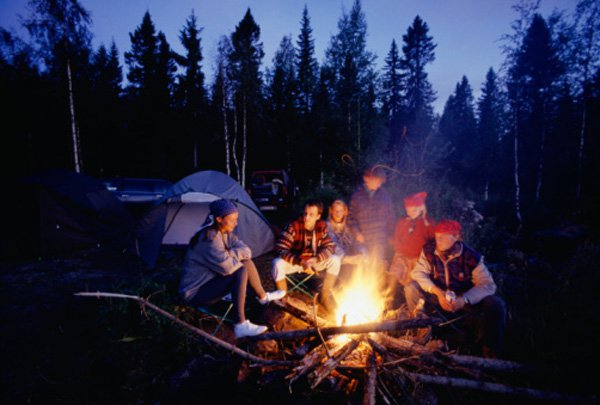There are three good reasons to go fishing in Mexico: lots
of bass, lots of big bass and the chance to get your head straight. Agreed, there is some hassle involved in traveling so far to fish. There is also the expense. But consider that, unless you live in the neighborhood, a visit to one of the premier U.S. bass waters (such as Lake Fork in Texas or Lake Tohopekaliga in Florida) will set you back $350 to $400 a day for a top guide, plus lodging, transportation and meals. That adds up to a hefty investment.
South-of-the-border bassing packages are all-inclusive. In Mexico you might spend anywhere from $895 to $1,695 to stay and fish at El Salto or Guerrero for three or four days. If you choose the former, everything is covered once you get to Mazatlan, including transportation to the lodge, meals, liquid refreshments and laundry.
As Good As It Gets
Wherever you go, don't expect to have to race somebody to the best fishing holes. There is no crowding. You will catch more and bigger fish consistently. You will be pampered. And after a few days away, all the madness of contemporary lifeÃÂthe traffic, politics, telemarketers, advertising jingles, stock market reports and sports scoresÃÂfade away and there is nothing but you and the fishing.
Mexico has a handful of fascinating bass lakes. Some of them, such as Baccarac and Guerrero, have been famous for a long time. Others aren't as old or as well known, but deserve to be noted because of the sheer numbers of bass caught from them and the average size of the fish. The current darling for numbers of big bass is El Salto, in the western part of the country. In 1990, when the lake's only lodge (Anglers Inn International) opened, the bass in El Salto had been growing for about five years without being harassed by fishermen. Almost immediately after the inn was opened, visiting anglers were experiencing hundred-fish days. Then, like teenage Lotharios, many fishermen switched loyalties to sample other newly opened lakes.
The focus is switching back now. Over the past three seasons, stories about gargantuan bass being caught from El Salto have spread like wildfire. This is probably the best place in the world to catch a 10-pounder, and that's a reasonable expectation. As of this writing, El Salto has produced largemouths to 161/2 pounds, and there is no reason not to find fish topping the 20-pound mark in these fecund waters. The lake gives up hundreds of bass ranging from 7 pounds to more than 10 pounds. The average growth rate here for bass is about two pounds a year, so it doesn't take long for El Salto to manufacture such lunkers.
Let us imagine that you are tempted, but that available openings at El Salto don't fit your schedule. No problemo; as noted, the land of cacti and tequila has many other excellent lakes to consider (see sidebar, page 24).
Regardless of where you ultimately wind up in Mexico, the fishing follows this general drill: Topwater lures shine in the early morning. As the sun climbs, anglers switch to big spinnerbaits, crankbaits and soft plastics, then back to surface baits late in the day until after sunset. If weather or low water push bass into channels, off points or over deep humps, jigs and jigging spoons may be in order.
Typically, U.S. anglers bring tackle that is too light for the conditions.
Besides considering the potential size of the fish, be aware that much of the best fishing occurs in and around standing drowned trees, and El Salto has beds and islands of hyacinth. Figure on 20-pound-test mono as standard (12- to 14-pound-test on lighter spinning outfits is suitable for more open situations). Even 30-pound-test braided "superline" could come in handy. Choose surface baits like the big Storm Chug Bugs and Zara Spooks or similar spitters/poppers. At El Salto, light spinnerbaits are 3/4-ounce; 11/2-ounce models are better. Worms should bbe 10 inches long and the best crankbait I've tried there is a large Excalibur Fat Free Shad, especially in the Citrus Glow color. The Fat Free Shad has a very loud rattle and when it hangs in the flooded branches of brazil, caoba and mesquite trees at El Salto, it usually backs out when given a slack line.
A Bass for the Road
The last time I visited El Salto's hallowed waters was just after 11 inches of rain had fallen. Though the angling group that visited before the deluge had hooked incredible numbers of fish and many large bass, action slackened following the monsoon.
Everything is relative, however, and you should know that what is substandard at El Salto may be phenomenal elsewhere. In three days my fishing partner, Mark Davis, caught two bass over 7 pounds, five in the 8- to 9-pound range, one that hefted 101/2 pounds and one that weighed 111/2 pounds. The two largest fish took a Fat Free Shad and a 11/2-ounce spinnerbait, respectively.
On my last day at the lake I fished with manager Tony Encinas-Burboa and bass-fishing booking agent "Wild Bill" Skinner (www.bassmex.com). We used seven-foot, medium-action Shakespeare Ugly Stik Lite rods, which cast big baits long distances, especially if you employ a two-handed, roundhouse swing in open territory. These rods have enough "give" so that a big bass can really engulf the lure before you or it has time to rip the hooks free on the strike.
In late evening Bill was re-rigging for topwater time and I fired a few more casts out between the trees with my Fat Free Shad. On what I had promised would be the crankbait's last trip, I felt the slightly heavy sensation that usually means a plug is going through grass. There was a slight difference this time, though; it was a rubbery feel and then I realized that a bass was swimming with the lure. I set the hook and a few minutes later boated an 111/2-pound bass, which proved to be my heaviest fish of the trip.
After I released the bass I saw that the day was almost done. The sky had turned a China blue streaked with bands of deep raspberry and we hastened to the shallows for an abbreviated topwater session. In the fading, golden light, the branches of the brazil trees morphed into black skeletal fingers jutting from the water. The sky grew progressively dark and stars and a gibbous moon appeared to contrast with the sooty red streaks that followed the sun over the desert mountains. It was magic hour.
Even in the twilight, the Zara Spooks continued to swim bravely, slippa- sloppa, zigzagging through the trees, with not a care. And then, kersploosh!
How to choose a summer camp in New York

How Much Football Referee's Earn money per match 2015

How Company Sports Leagues Can Improve Employee Morale

Copyright © www.mycheapnfljerseys.com Outdoor sports All Rights Reserved